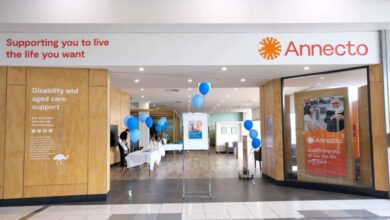Researchers work to keep Meals on Wheels running
Meals on Wheels has pedalled a long way since a woman on a tricycle delivered the first tucker in 1952, writes Natasha Egan.
A three-year study is investigating best practice and new approaches of the hot meal delivery service Meals on Wheels to ensure the volunteer brigades stay on the road.
In partnership with the Meals on Wheels Australia, researchers from the University of New England and La Trobe University have spent the past year looking at innovation overseas and will survey local services next.
Meals on Wheels first appeared in Australia in Melbourne in 1952. Today there are 750 local services across the country supported by state associations and a national body that represents them.
Co-investigator Jeni Warburton, from La Trobe, said the project aimed to help Australian Meals on Wheels services recruit volunteers and become more sustainable; challenges she said the volunteer organisations were facing globally.
“We’ve got this move to keep people in their homes. People don’t want to move into institutions and nutrition is clearly an important aspect of keeping them at home,” Warburton said.
One of the major challenges has been getting enough volunteers available every day, she said. In part this has been put down to societal changes such as more women working and many older people having other commitments and busier social lives.
In addition to nutrition, the service provides basic social contact to recipients, which Warburton said was challenged by volunteers not having the time and capacity to stay and talk longer than a quick hello.
“Some of the issues that have come up are where meals on wheels is most needed - for people who are house-bound,” she said.
She said they will explore if there are alternative options that offer clients a chance to socialise. “Are there better ways of encouraging people to go to a community setting and have a meal, and help them get there?”
Warburton said while there wasn’t anything necessarily wrong with current local models, services were run differently in each state and often in each community. Examples include, volunteers delivering meals produced by the local hospital; people producing then delivering the meals themselves; and services that deliver frozen packs once a week.
From their overseas research, Warburton said they found some interesting models in terms of community, meals, social inclusion, attracting a range of different volunteers and getting people to do different roles.
She said some worked with people who had particular needs, such as long-term unemployed or with mental health issues, and integrated them into a service. Others had worked with corporate organisations that supplied volunteers or sponsored routes or supplied cars.
“Some worked with young people who delivered meals produced in schools or university kitchens then the young people delivered the meals. So there were meals on two wheels - meals by bike. That was popular in a lot of city locations.”
The researchers will investigate how each service responds to the challenges to discover which are particularly effective. They will use the final year of the study to analyse and compare the local findings with the international approaches to determine how Australia matches up.
“We’ll be looking at ... what seems to work well and what ticks all the boxes in terms of efficiency, effectiveness and sustainability.”
Email: [email protected]





